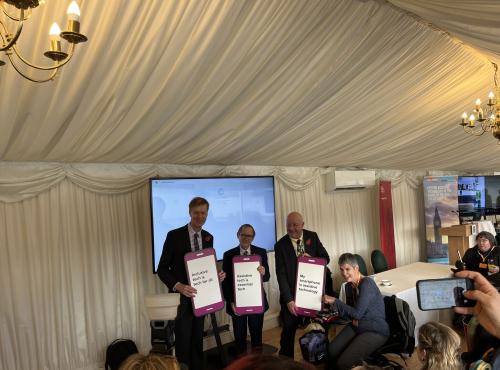Achieving net zero: sustainable fashion
People in the UK buy more clothes per person than any other country in Europe, owning around 100 items per person and 6 billion items in total. The UK fashion industry employs 890,000 people in design, manufacturing and retail, and was worth £32 billion in 2017. A report by the sustainability forum Global Fashion Agenda projects that global consumption of clothing could rise by 63% on 2017 levels by 2030.
Global textile production produces more carbon emissions than international flights and shipping combined, at around 1.2 billion tonnes of carbon dioxide equivalent (CO2e) per year.1 In the UK, carbon emissions from clothing production, use and disposal rose from 24 million tonnes in 2012 to 26.2 million tonnes in 2016. This is equivalent to around 5% of the UK’s total emissions in 2018. The rise can be attributed to greater clothing consumption, as during the same period there was a decrease in emissions per tonne of clothing.
The rise in global clothing consumption has been linked to fast fashion. Fast fashion refers to an accelerated business model with low prices, frequent new collections and quick turnarounds to offer new products and rapidly meet consumer demand.1 Fast fashion is associated with a short clothing life span and high levels of consumer waste.
As well as carbon emissions, current systems of fashion production have high social costs, use huge quantities of water, shed trillions of microplastics and contribute to biodiversity loss through land use for producing natural fibres. Although these problems are interconnected, this roundtable focuses primarily on carbon emissions.
Chair:
Dr Lisa Cameron MP
Speaker:
Dr Mark Sumner, University of Leeds



